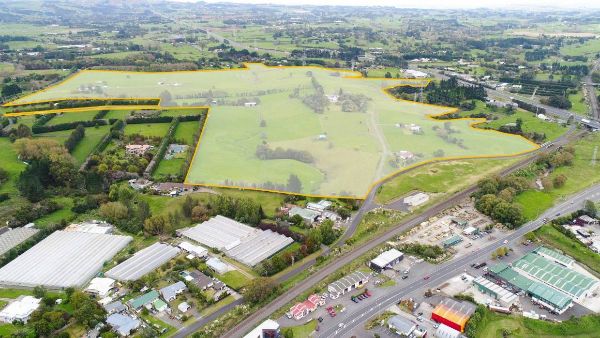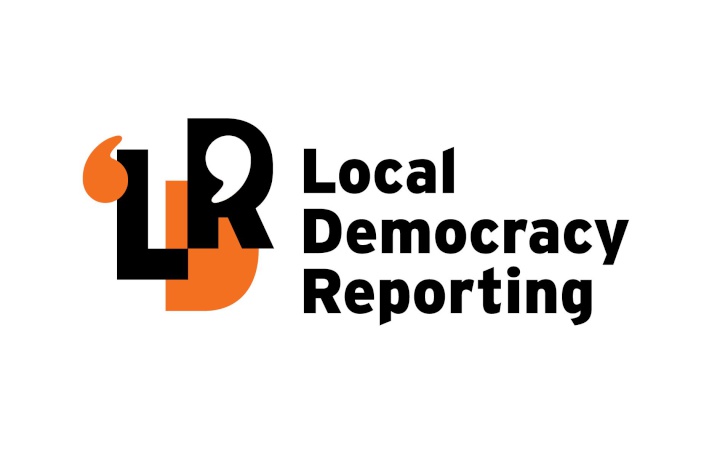
Plans to open up Drury for three massive development projects by Oyster Capital, Fulton Hogan and Kiwi Property are now one step closer and could transform the area over the next 30 years.
But a number of Auckland councillors are concerned with how the city is going to pay for the billions of dollars worth of infrastructure that will be needed to support it.
The three companies are seeking to increase the amount of residential, commercial and retail development in the area. Coupled with massive investment by the Auckland Council, the NZTA, Kiwirail and the government, the small semi-rural town could be metamorphosed into part of a satellite city south of Auckland.
They are collectively planning to rezone approximately 330 hectares of land in the Drury East area from future urban to a mix of residential, business and open space zones.
The Auckland Council’s Planning Committee voted on Thursday to accept the private plan change requests. They will now go out for public consultation before a series of hearings. But the changes will still need to be signed off by the Auckland Council to be finally adopted.
In 2019 the council signed off the Drury-Opāheke Structure Plan which is projected to provide room for about 22,000 houses in the area with a population of 60,000 people and the creation of 12,000 jobs.
In January the government announced $12 billion in funding for the New Zealand Upgrade Programme. It features a number of major transport projects in the area, including a new Drury railway station, the Mill Road project, electrification of the rail lines between Papakura and Pukekohe and widening of SH1 between Drury and Papakura.
But according to the council despite billions being earmarked for the area, there’s still just over $1 billion worth of infrastructure that will be needed that doesn’t currently have funding. That includes $600m for transport-related projects and a further $500m will be needed for stormwater, sewerage, parks and community facilities.
And it’s something Auckland Council Planning Committee chairman Chris Darby is concerned about.
“We have to look at how we are going to pay for the Auckland Council’s share,” he said. “We’ve only got so much money to go around at the moment and we’re very stretched and so is the NZTA.”
The redevelopment of Drury is part of a wider plan which will see the total population of Takanini, Drury, Opāheke, Paerata and Pukekohe areas grow to 120,000 over the next 30 years.
“That’s a city the size of Dunedin,” Auckland councillor Daniel Newman said. “So there are massive financial implications involved in this.
“These plan changes will require works worth hundreds of millions of dollars and we don’t have that kind of money at this time.”
And he’s not convinced the projected shortfall of $1.1 billion is accurate.
“If you look at the costs we are looking at they could go much higher than that.”
But Kiwi Property development manager David Schwartfeger said the cost of funding the infrastructure can be staggered over the 20 year period the development is scheduled to take place over.
He said if the plan changes are given the green light by Auckland Council it plans to start work in 2023 and the works will continue over two decades.
Schwartfeger said the fact council has now accepted the plan changes submitted by Kiwi Property, Fulton Hogan and Oyster Capital is the first step and the public will now have the opportunity to make submissions on the proposed developments.
“We believe Drury has the potential to become a thriving town and are committed to playing our part to make that vision a reality, including funding the infrastructure upgrades on our landholdings. Drury’s growth will take place over a number of years and the construction of new infrastructure can be phased accordingly.”
Oyster Capital and Fulton Hogan were also contacted for this story.



 Martin LeFevre - Meditations: Waiting For Trump - How Bad Will It Be?
Martin LeFevre - Meditations: Waiting For Trump - How Bad Will It Be? Ramzy Baroud: The Gaza Genocide - The Fall Of Israel’s Immunity
Ramzy Baroud: The Gaza Genocide - The Fall Of Israel’s Immunity Gordon Campbell: On The History Of Doo Wop Music
Gordon Campbell: On The History Of Doo Wop Music Ian Powell: When Politics Gets In The Pocket Of The Gun Lobby
Ian Powell: When Politics Gets In The Pocket Of The Gun Lobby Binoy Kampmark: AUKUS - Flawed And Sinking
Binoy Kampmark: AUKUS - Flawed And Sinking Martin LeFevre - Meditations: The Darkest Hour Before Dawn Or The Sum Of All Dark Ages?
Martin LeFevre - Meditations: The Darkest Hour Before Dawn Or The Sum Of All Dark Ages?